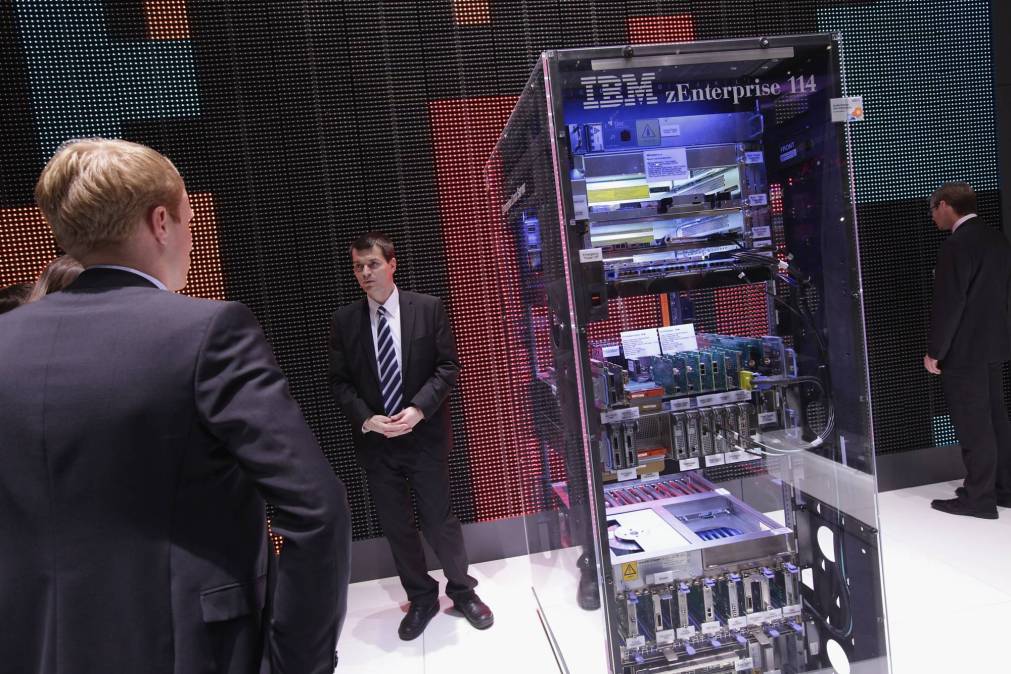New Jersey taps IBM’s mainframe as a service

As the State of New Jersey’s IBM mainframe reached its end-of-life in early 2020, officials found themselves at a technological crossroads: replace the expensive behemoth or find an alternative.
They opted for an alternative, sticking with IBM for the computing giant’s mainframe-as-a-service and pushing it live in June. New Jersey Chief Technology Officer Christopher Rein told StateScoop it was “tough decision,” particularly because the mainframe houses roughly 200 of the state’s applications, many supporting critical services.
Major state police, motor vehicle and treasury applications run on New Jersey’s mainframe, as does the state’s unemployment insurance system.
“We didn’t go out and buy new iron and stick it in our data center,” Rein said. “We’re now operating it off of a mainframe that’s in the cloud. It helps out with our disaster recovery and more flat budgeting over time. We don’t have to look for where are we going to get 8, 9, 10 million dollars and buy a new mainframe every life cycle of six or seven years.”
‘Expensive’ computing
Officials said the project — which shaved off 8 to 15 months of procurement time by piggybacking on the state’s existing contract with IBM — has been a success, with improved performance and flexibility as the state encourages agencies to explore options for modernizing their applications. The state expects to pay IBM nearly $40 million for the project over seven years, though officials said the exact cost could change based on usage.
Officials also said it didn’t make sense to spend on a new mainframe while they’re simultaneously encouraging agencies to explore ways to modernize those applications. But a cloud-based solution is designed to be scaled back, Rein said.
“You pay for those mainframe CPU seconds, gosh they’re incredibly expensive,” Rein said. “So now as we reduce the workload over time, as our agencies one by one modernize and maybe reduce their dependency on mainframe processing, our utilization costs go down.”
Rein said the contract was “one of the most robust, detailed and carefully reviewed and approved” he’s seen in his government career. The work was largely facilitated by Roger Gibson, the Office of Information Technology’s chief operating officer, who called the contract negotiations “a challenge.”
“The scope of work for a mainframe as a service contract can be daunting,” Gibson said. “We were walking a very fine line — we were not undertaking mainframe as a service to completely outsource our platform. We were trying to plan for the future and better support the platform knowing the staffing challenges we were going to have.”
Gibson said the state wanted to maintain batch operation, application support and database administration functions, while outsourcing the storage.
Priced out
Other states have found themselves with similar workforce challenges as their systems age. Montana retired its mainframe out of concern for a shortage of support staff. And North Dakota last year contracted help in Latvia, a country where the technology continues to be widely taught; officials in North Dakota said at the time there’s little incentive for technologists in the United States to stick with mainframe programming when other IT skills are more lucrative.
“Getting a z/OS engineer in the New York/New Jersey metro area is a real challenge these days,” Gibson said, referencing IBM’s mainframe operating system. “Even if you can find them, we’re priced out because it’s the banks and the pharmaceuticals and all these other companies that have the resources.”
Challenges, he said, included setting up private network links between the state and IBM, negotiating customer demands during the project and finding a safe data-transfer method. Given more planning time, Gibson said, he would have selected a different method then IBM’s Transparent Data Migration Facility, which he said turned out to be a bit “risky,” though everything turned out OK.
As for the mainframe’s future in New Jersey, Gibson said it’s the state’s most powerful host, handling millions of transactions each day, with banks, vendors and various service providers.
“This host does a really good job — that’s exactly what the mainframes were designed for,” he said. “But a lot of the needs the customers in the executive branch are having are more customer focused, where we’re providing more self-service web interfaces. I think we’ll see a shrinking of the platform, but the host itself is not the problem. It’s the accessibility and the interfacing and the knowledge to continue to support. That really is the challenge, not necessarily the platform itself.”






